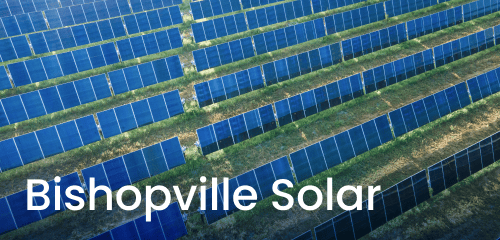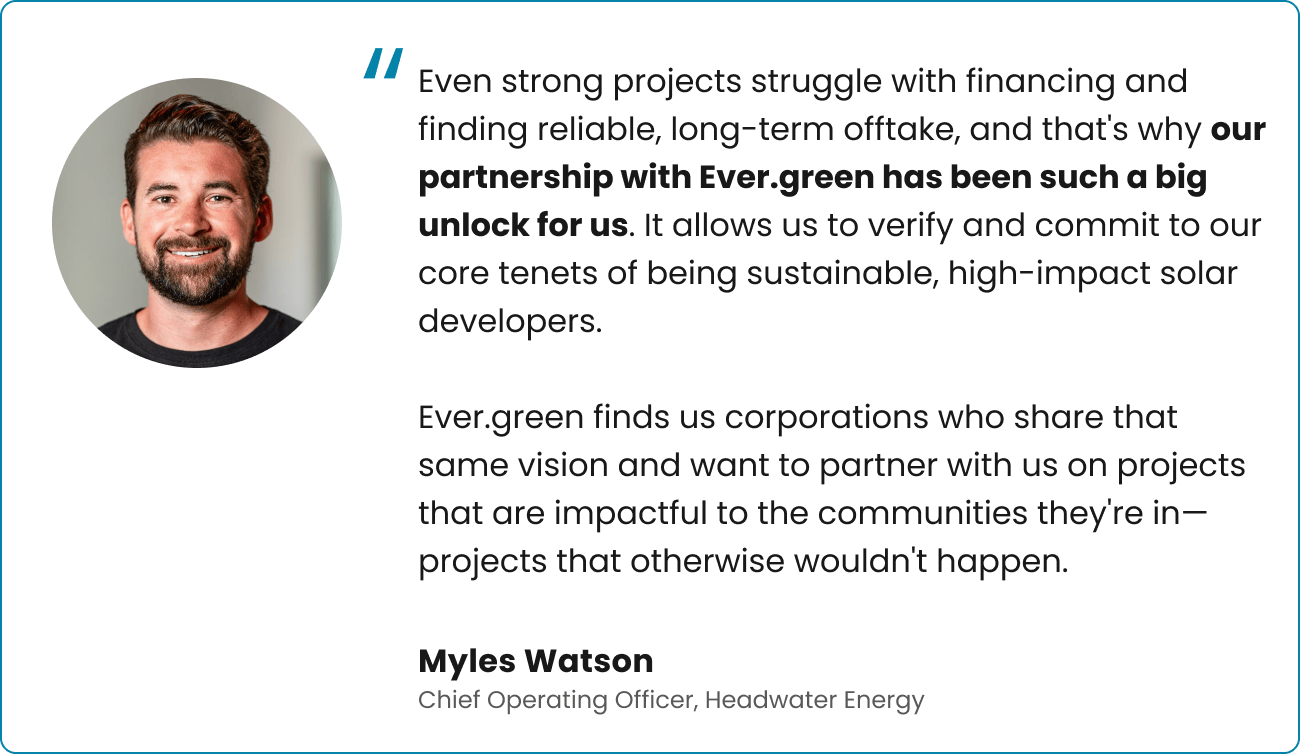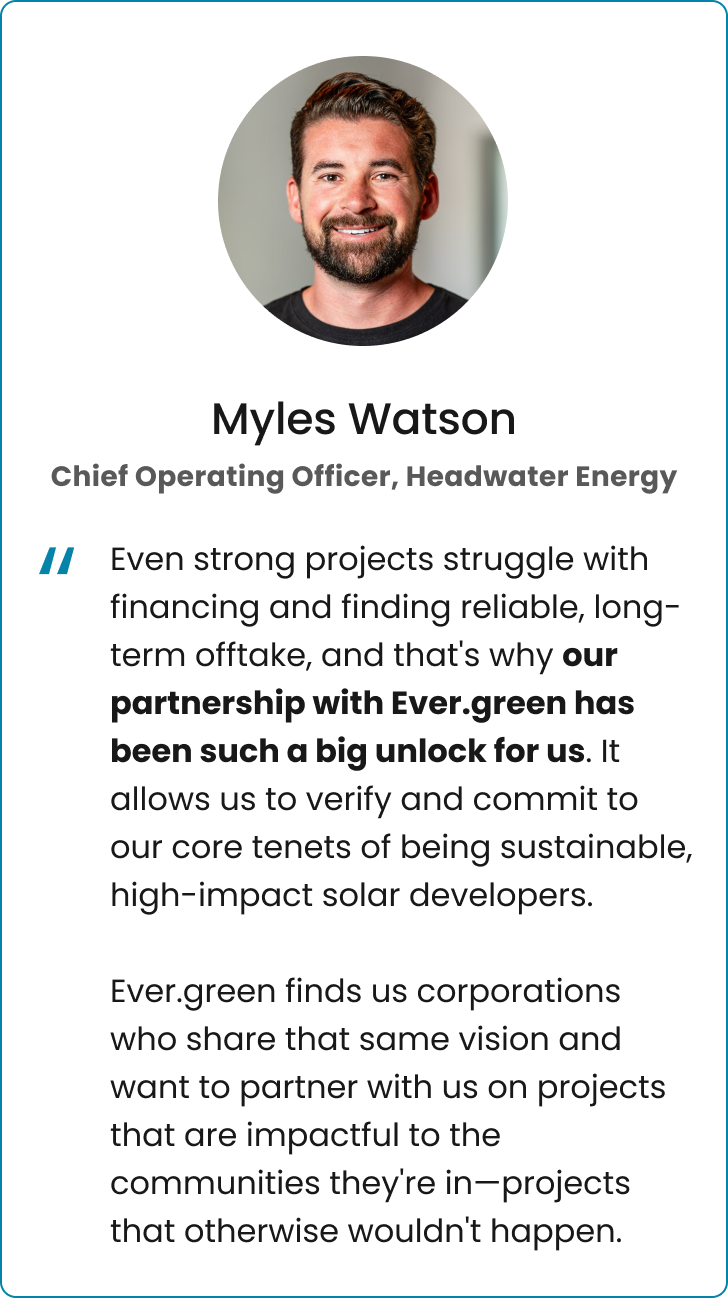CASE STUDY
Bishopville Solar
How Ever.green High-Impact RECs helped unlock 28 MW of solar power
The Southeast’s Clean Energy Gap
The Southeast remains one of the most fossil-fuel-dependent regions in the United States. States like South Carolina, Georgia, and Alabama are not part of the wind corridor or the Southwest solar belt, and complex utility regulations have slowed the growth of renewables. As a result, many communities continue to face the environmental and health impacts of decades of coal and gas generation.
When companies decide where to invest their renewable energy dollars, they face a critical choice: add capacity to grids that are already well on their way to becoming clean, or help bring new renewable generation to fossil-heavy regions that need it most. The path of greatest impact often leads to places like South Carolina, where, while nuclear power has been a steady source of power, natural gas (methane) has more than doubled in the state over the past decade and now, along with coal, represents ~40% of power generation. Here, new solar projects directly displace fossil generation and expand access to clean energy for local communities.
Catalyzing New Projects in Underserved Markets
Ever.green helps bring new renewable projects online by connecting mission-driven developers with corporate buyers through long-term High-Impact REC contracts. REC contracts deliver the predictable revenue that developers need to secure financing and move projects forward.
In 2024, Ever.green partnered with Headwater Energy to identify solar projects in their pipeline that needed additional financial support. One such project was located in Bishopville, South Carolina, a town in Lee County with a population of 3,200. The site had everything needed to succeed: strong solar resources, an approved interconnection, local permits, and community support. But without a long-term REC buyer, the project faced indefinite delays.
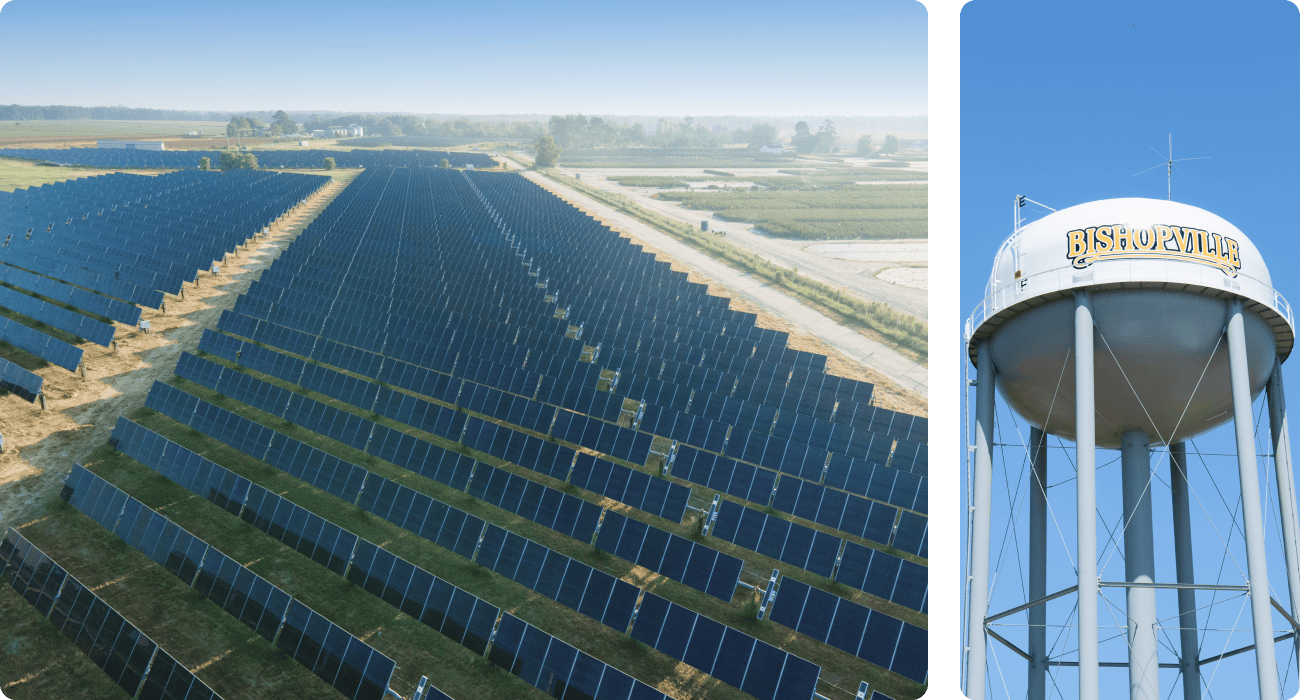
The Bishopville Solar site
Corporate Renewable Energy Buyers Make the Difference
That changed when Wells Fargo stepped in. Ever.green structured a 10-year purchase agreement of 50,000 Green-e certified RECs per year, priced to meet both Headwater’s investor return requirements and Wells Fargo’s sustainability budget.
With nearly 300 locations and tens of thousands of employees in the Carolinas, Wells Fargo has committed to sourcing 100 percent renewable electricity by 2030. The company was actively seeking projects that would deliver real impact in the same regions where its employees and customers live and work.
The Bishopville Solar Farm reached commercial operation in October 2025. Each quarter, Ever.green retires RECs on behalf of Wells Fargo and provides full transparency on serial numbers, timestamps, and avoided emissions.
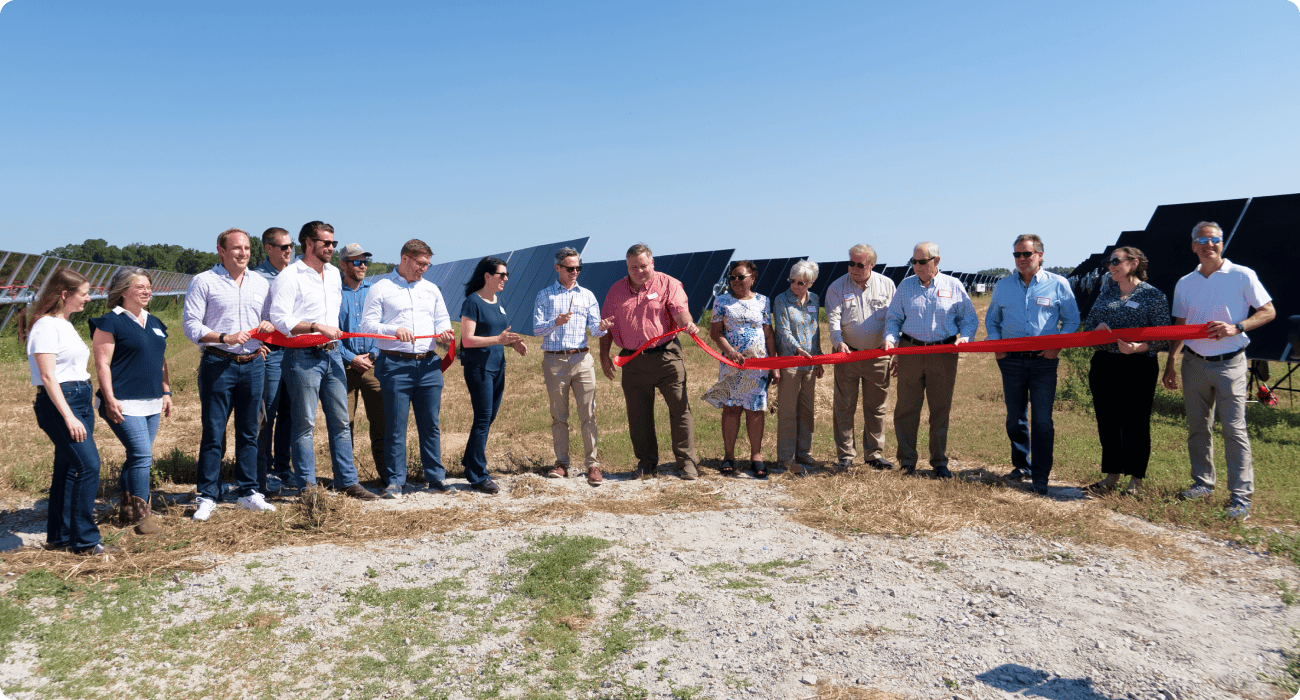
Wells Fargo, Headwater, & Ever.green join forces to celebrate the Bishopville Solar launch.
Why Distribution-Level Connection Matters
Unlike many large solar farms that connect through distant transmission lines, the Bishopville Solar Farm connects at the distribution level. This means it feeds clean energy directly into the same circuits that power homes and businesses in Lee County.
The local benefits are significant. The project provides property tax revenue that supports schools, infrastructure, and emergency services. Construction created jobs for local contractors and brought long-term employment opportunities for operations and maintenance.
The Bishopville Solar Farm also delivers clean power to a rural community that has long relied on fossil fuels. Each year, it will generate 50,000 megawatt-hours of clean electricity, enough to power 3,000 homes and avoid over 30,000 metric tons of carbon dioxide emissions every year.
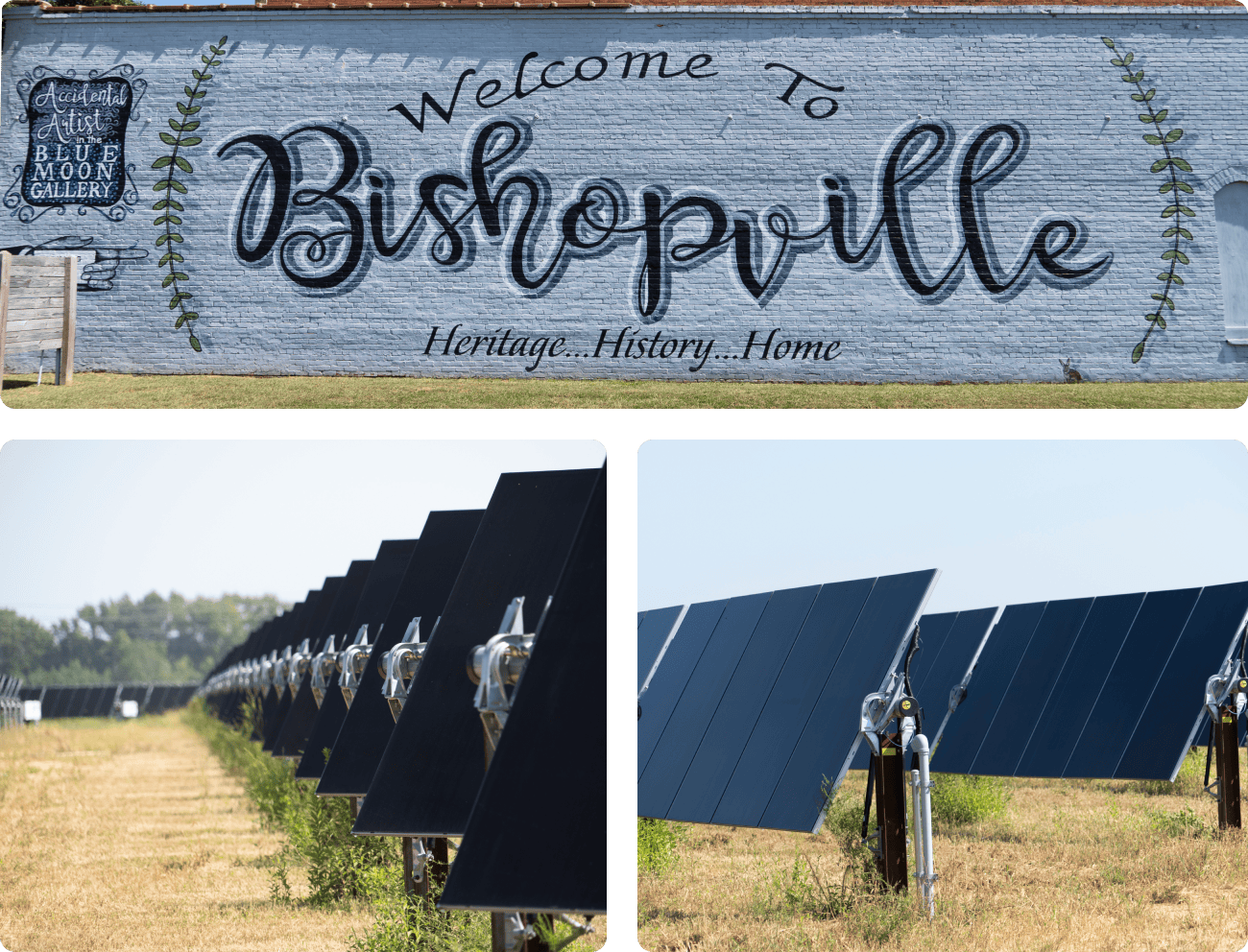
First Solar thin-film panels made in the USA
Why Timing is Critical for Renewable Energy Investment
The window for impactful corporate action is narrowing. Federal tax incentives that have supported renewable energy development are being phased out early, making project financing more difficult. Analysts are already forecasting a slowdown in new renewables compared to previous years’ forecasts.
At the same time, updated Scope 2 accounting rules from the Greenhouse Gas Protocol may change how companies can credibly claim renewable electricity use. These changes are happening as many organizations push to meet 2030 decarbonization goals.
The good news is that companies that act now can secure long-term renewable energy contracts before prices increase further, supply tightens, and regulatory changes make compliance more complex. More importantly, they can play a meaningful role in accelerating the energy transition at a moment when it matters most.

Bishopville Solar - 28MW facility
Ever.green is the trusted marketplace for High-Impact RECs & clean energy tax credits.
Ever.green’s dedicated team of renewable energy advisors will support you from start to finish to help maximize your team’s impact while minimizing overhead.
Ever.green case studies
High-Impact RECs
TX
Wind
Ocotillo Refurbished Wind
Ever.green brought together 14 impact-driven organizations of all sizes to revitalize an aging wind farm in service of their sustainability goals.
View case studyClean Energy Tax Credits
AR
Solar
Ralston Family Farms
Ever.green matched Ralston Family Farms with a buyer and guided the deal from start to finish, making it easy for both sides to benefit from clean energy tax credits.
View case study

